Introduction
Can Guinea Pigs See Color: Guinea pigs, those charming and delightful little rodents that have found their way into countless households as beloved pets, continue to captivate the curiosity of their owners with their endearing behaviors and distinct personalities. Their lovable squeaks and cute appearance have long been the source of fascination, one that arises among guinea pig enthusiasts is whether these small creatures can see color. In the intricate world of guinea pigs water vision to uncover the mysteries of their visual perception. The animal vision is a fascinating and diverse one, with each species evolving unique adaptations suited to their specific needs. Guinea pigs, scientifically known as Cavia porcellus, are no exception. These charming herbivores, native to the Andes region of South America, have become a popular choice for households worldwide due to their gentle disposition and relatively easy care.
Their visual abilities have remained a subject of intrigue for both scientific researchers and guinea pig owners alike. To comprehend the world as guinea pigs perceive it, we must embark on a journey into their sensory world. Unlike humans, who rely heavily on their vision to navigate the world, guinea pigs are primarily crepuscular, meaning they are most active during dawn and dusk. This characteristic is thought to be an adaptation that helps them avoid predators foraging for food in the wild. Consequently, their visual capabilities have evolved to accommodate this lifestyle.
The nuances of guinea pig vision, we will learn their color perception, the role of their eyes, and the impact of their unique biology on their visual world. By then you will have a clearer understanding of whether guinea pigs can indeed see color and how their visual abilities contribute to their remarkable lives as beloved pets. So, embark on this enlightening journey to uncover the vivid or perhaps not-so-vivid world of color in guinea pig vision.
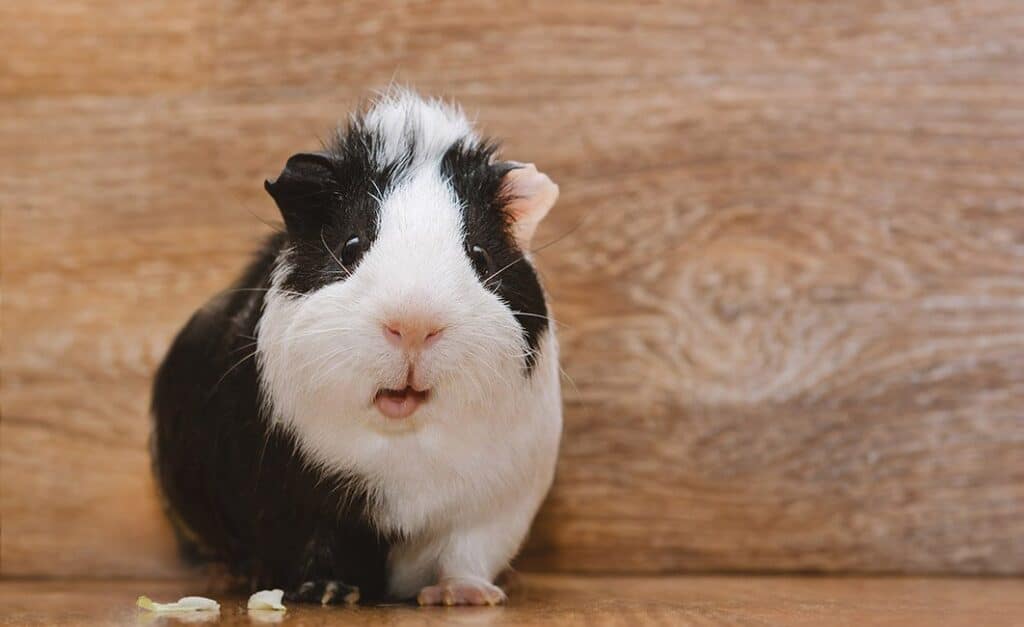
How do guinea pigs see humans?
Guinea pigs have both good and bad eyesight
This means they can see in front of them, above them, and to the side of them, all without moving their head! That being said, guinea pigs have poor depth perception and can’t see over 3 to 5 feet ahead of them, and they can’t make out fine details.
Limited Color Perception: Guinea pigs have a limited color perception, primarily in the blue and green spectrum, with reds and oranges appearing as shades of gray. This is due to their dichromatic vision, which means they perceive the world in only two primary colors blue and green. They may not see the vibrant spectrum of colors that humans do, they can still detect certain hues, albeit in a more subdued manner.
Visual Acuity: Guinea pigs have relatively poor visual acuity compared to humans. Their eyes are adapted for detecting motion and identifying general shapes and patterns, rather than fine details. This adaptation is a survival mechanism that helps them detect potential predators or threats in their environment.
Peripheral Vision: Guinea pigs have a wide field of view, thanks to their large, protruding eyes located on the sides of their heads. This peripheral vision allows them to be vigilant and alert to movements and changes in their surroundings. It’s an trait that helps them avoid potential dangers.
Recognition and Bonding: Guinea pigs may not perceive humans with the same clarity and detail that we perceive each other, they do recognize their human caretakers through other sensory cues. They can recognize their voices, scents, and even their unique footsteps. Over time, guinea pigs can form strong bonds with their human companions, based on trust and positive interactions.
Do guinea pigs recognize their owners?
Yes! Guinea pigs are smart creatures that are easy to develop a bond with. A guinea pig will recognise their owner as the caregiver who gives them food and love. A sure sign a guinea pig recognises you is that they feel safe around you.
Sensory Recognition: Guinea pigs rely heavily on their senses, including sight, smell, and sound, to navigate their environment and interact with those around them. Their eyesight may not be as keen as that of humans, they can still perceive their owners visually, recognizing familiar faces, movements, and silhouettes. However, their limited color vision means they may not distinguish specific colors or intricate details.
Olfactory Recognition: Scent is a significant factor in guinea pig recognition. These rodents have a strong sense of smell and use it to identify their environment and companions. They become familiar with the scent of their owners, making regular, gentle handling and hand-feeding essential for bonding.
Tactile Recognition: Guinea pigs are also highly tactile animals. They become accustomed to the touch of their owners and may show preferences for certain types of handling. Some guinea pigs enjoy gentle petting and cuddling, while others may prefer to be more independent. Paying attention to their individual preferences can strengthen the bond.
Do guinea pigs mind the dark?
They could be up at two in the morning running around with each other, or asleep at eight in the morning and up again an hour later. It’s safe to say that guinea pigs enjoy the dark at least, but we’d even go as far as to say they prefer the dark!
Crepuscular Behavior: Guinea pigs are crepuscular animals, which means they are most active during dawn and dusk when natural lighting conditions are subdued. This crepuscular behavior is an adaptation that helps them avoid predators foraging for food in the wild. As a result, they are naturally inclined to be active in low-light environments.
Limited Nocturnal Activity: Unlike some nocturnal animals, guinea pigs are not well-suited to complete darkness. They do not possess the specialized adaptations such as enhanced night vision seen in creatures like owls or cats. They can navigate in low-light conditions, they may become disoriented or stressed in total darkness.
Eyesight Adaptations: Guinea pigs have evolved to see well in their preferred low-light settings. Their eyes are adapted to detect motion and identify general shapes and patterns, rather than fine details. Their large, protruding eyes located on the sides of their heads give them a wide field of view, which is useful for detecting movement in their surroundings.
Sensitivity to Sudden Changes: Guinea pigs can be sensitive to abrupt changes in lighting conditions. A sudden shift from bright light to darkness or vice versa can startle or stress them. A gradual transition in lighting when caring for guinea pigs to avoid causing undue anxiety.
How do guinea pigs show you love?
This is especially true if your piggy is cuddling you on your lap on a fleece pee pad or cuddle cup. If they close their eyes while resting with you or even during head pats and scratches, they are very likely enjoying your attention! Guinea pigs tend to only close their eyes when they feel safe and relaxed!
Purring and Vocalizations: One of the most common ways guinea pigs express contentment and affection is through purring. Guinea pigs emit a soft, rhythmic purring sound when they are happy, relaxed, or feeling safe. This gentle purring is often accompanied by other vocalizations like chirping, whistling, or cooing, which are their ways of communicating their comfort and happiness to their owners.
Nuzzling and Nibbling: Guinea pigs are naturally curious and tactile creatures. When they approach you with a gentle nuzzle or nibble, it’s a sign of trust and affection. They might explore your hand, fingers, or even your clothing, signaling their comfort in your presence.
Cuddling and Snuggling: Guinea pigs love to cuddle and snuggle with their human companions. When they curl up against you or seek warmth and security by resting against your body, it’s a clear indication of their attachment. Many guinea pigs enjoy being held or cradled, and this physical closeness strengthens the bond between pet and owner.
Do guinea pigs lick you if they like you?
It’s generally regarded as a very affectionate gesture. In the same way that they show affection through grooming one another, they could well be attempting to groom you to! Guinea pigs may also lick you to lap up the salty taste on your skin.
Licking vs. Nuzzling: Unlike dogs and cats, guinea pigs are not naturally inclined to lick their owners as a sign of affection. Instead, they tend to express their fondness through nuzzling and nibbling. When a guinea pig nuzzles your hand, fingers, or clothing, it’s a tactile and exploratory behavior that indicates their comfort and trust in your presence. They might gently nibble as well, which is not a sign of aggression but rather a form of communication.
Grooming Rituals: Guinea pigs are meticulous groomers, and they often groom each other as a way of bonding and maintaining social harmony within their herd. Guinea pigs may not groom humans in the same way, they may exhibit grooming-like behaviors as a sign of affection. This can involve gently licking your fingers or hands when they are relaxed and content.
Individual Variations: To recognize that guinea pig behavior can vary from one individual to another. Some guinea pigs may exhibit licking-like behaviors more than others. These variations may be influenced by their personality, previous experiences, and the quality of the bond they have formed with their human caregiver.
Do guinea pigs like to be kissed?
If you’re wondering whether you can bestow your piggy with smooches, then know that guinea pigs are typically happy to be kissed if they’ve formed a trusting bond with you. However, if your guinea pig is new to your home or appears particularly nervous, then it’s best to wait a while until they feel more comfortable.
Limited Understanding: Guinea pigs are not like dogs or cats, which enjoy physical affection like petting and kissing. Guinea pigs may not fully understand the concept of kissing as a form of affection. Their understanding of the world is primarily based on sensory cues, such as scent, touch, and sound.
Sensitivity to Handling: Guinea pigs can be sensitive to handling and physical contact, especially if they are not accustomed to it or if they feel threatened. Kissing, which involves bringing your face close to them, may startle or stress them if they are not used to such interactions. It’s crucial to approach them gently and respect their boundaries.
Comfort and Trust: Guinea pigs can form strong bonds with their human caregivers based on trust and positive experiences. If a guinea pig feels safe, relaxed, and accustomed to gentle handling, they may become more accepting of physical affection, including kisses. Building a bond with your guinea pig through consistent care, feeding, and gentle interactions can make them more comfortable with close contact.
Do guinea pigs have a good memory?
Guinea pigs are very clever; they can comprehend and learn things, they have excellent memory, and they have many appealing qualities. They’re small, gentle, and personable, and constantly entertaining as they go about their day.
Short-Term Memory: Guinea pigs have relatively good short-term memory. They can recent events and experiences, such as recognizing their human caregivers, familiar scents, and the layout of their environment. This ability is useful for navigating their surroundings, identifying potential threats, and anticipating routine activities like feeding.
Associative Learning: Guinea pigs are capable of associative learning, which involves forming connections between specific cues or actions and their consequences. For instance, they can quickly learn to associate the sound of a food container opening with mealtime, and they may become excited and vocal when they hear this sound.
Social Recognition: Guinea pigs also display strong social memory. They can recognize and the scent, appearance, and behaviors of their fellow guinea pigs. This social memory is crucial for maintaining relationships within a group, recognizing hierarchy, and forming bonds with their companions.
Spatial Memory: Guinea pigs have a good spatial memory. They can the layout of their habitat and the location of resources like food, water, and hiding spots. This spatial memory helps them navigate their environment efficiently and find safety when needed.
What are guinea pigs scared off?
Fears of toys, people, and loud noises are the most common fears. There are many reasons why a guinea pig may develop fears of people. For example, a bad experience with a small child could result in a guinea pig that is fearful of all small children.
Loud Noises: Guinea pigs have highly sensitive hearing, and loud or sudden noises can startle them. Common sources of loud noises include vacuum cleaners, blenders, door slams, or even thunderstorms. To minimize stress, it’s best to keep their habitat in a quiet area and reduce exposure to sudden loud sounds.
Sudden Movements: Guinea pigs are prey animals by nature, and they are naturally cautious of sudden movements or gestures. Quick and unexpected movements, such as reaching into their cage too abruptly, can frighten them. It’s to approach them slowly and gently to avoid startling them.
Predatory Animals: Guinea pigs have an instinctual fear of potential predators, even if they are kept as pets in a safe environment. The presence of dogs, cats, or other animals that might seem threatening can cause stress and fear in guinea pigs.
Handling: Guinea pigs can become accustomed to gentle handling over time, improper or rough handling can be frightening and distressing for them. It’s essential to handle them with care and support their body properly to ensure their comfort and safety.
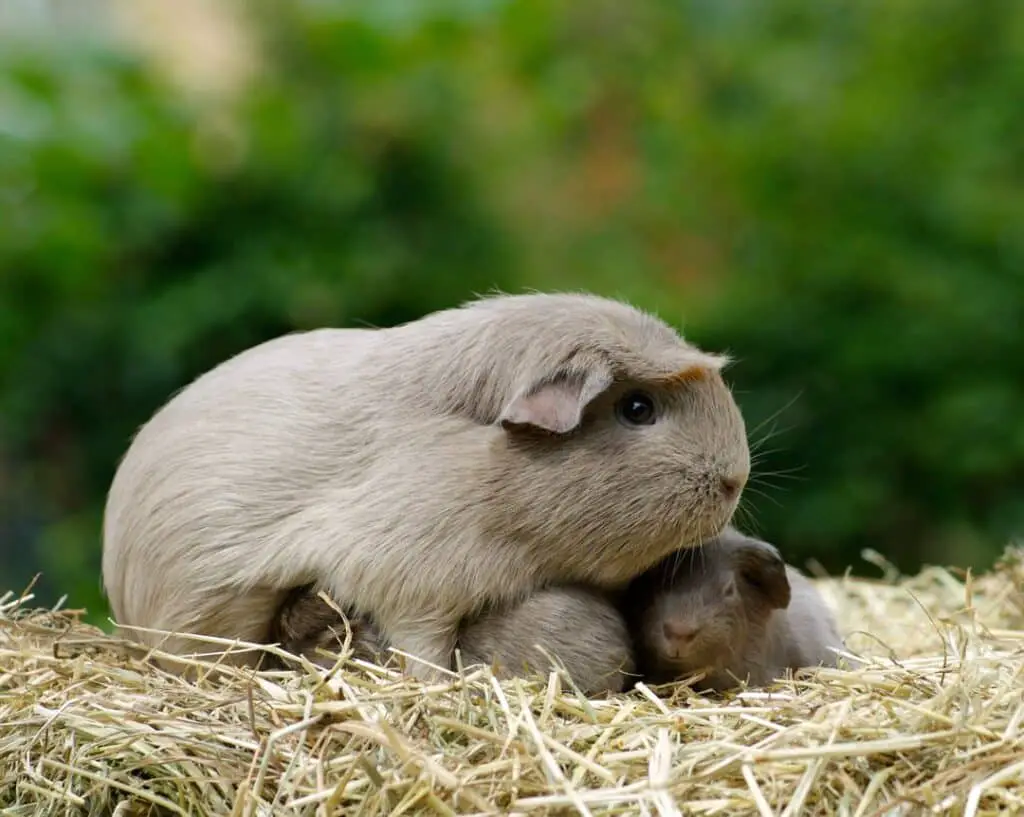
Conclusion
Guinea pigs can see color is a fascinating inquiry into the sensory world of these beloved rodents. Throughout our exploration, we have uncovered several key insights that shed light on the intricacies of guinea pig vision. Guinea pigs, not endowed with the full spectrum of pigs color that humans perceive, do possess the ability to distinguish between certain colors. Their color vision is limited to the blue and green spectrum, with reds and oranges appearing as shades of gray. This limited color perception is due to their dichromatic vision, a feature shared with other rodents, and is a product of their evolutionary adaptations.
The constraints of guinea pig color vision is not merely an exercise in curiosity but has practical implications for their care and environment. For instance, when choosing accessories, toys, or bedding for guinea pigs, opting for colors within their visible spectrum, such as blues and greens, may enhance their overall well-being and engagement with their surroundings. Guinea pig vision enriches our understanding of their behavior. Their crepuscular nature, with a preference for low-light conditions, aligns with their visual capabilities. It explains their tendency to be more active during dawn and dusk when natural light levels are subdued, allowing them to navigate and forage effectively while minimizing exposure to predators.
In guinea pig ownership, this knowledge empowers pet parents to create environments that cater to their furry companions’ sensory preferences. Providing a safe, comfortable, and visually stimulating habitat can contribute to the overall health and happiness of guinea pigs. Guinea pigs may not experience the world in the same colorful palette as humans, their unique vision enriches their lives in ways that are suited to their natural habits and behaviors. Their ability to perceive certain colors within their range adds a layer of complexity to their sensory experiences, making them all the more captivating and endearing as pets.

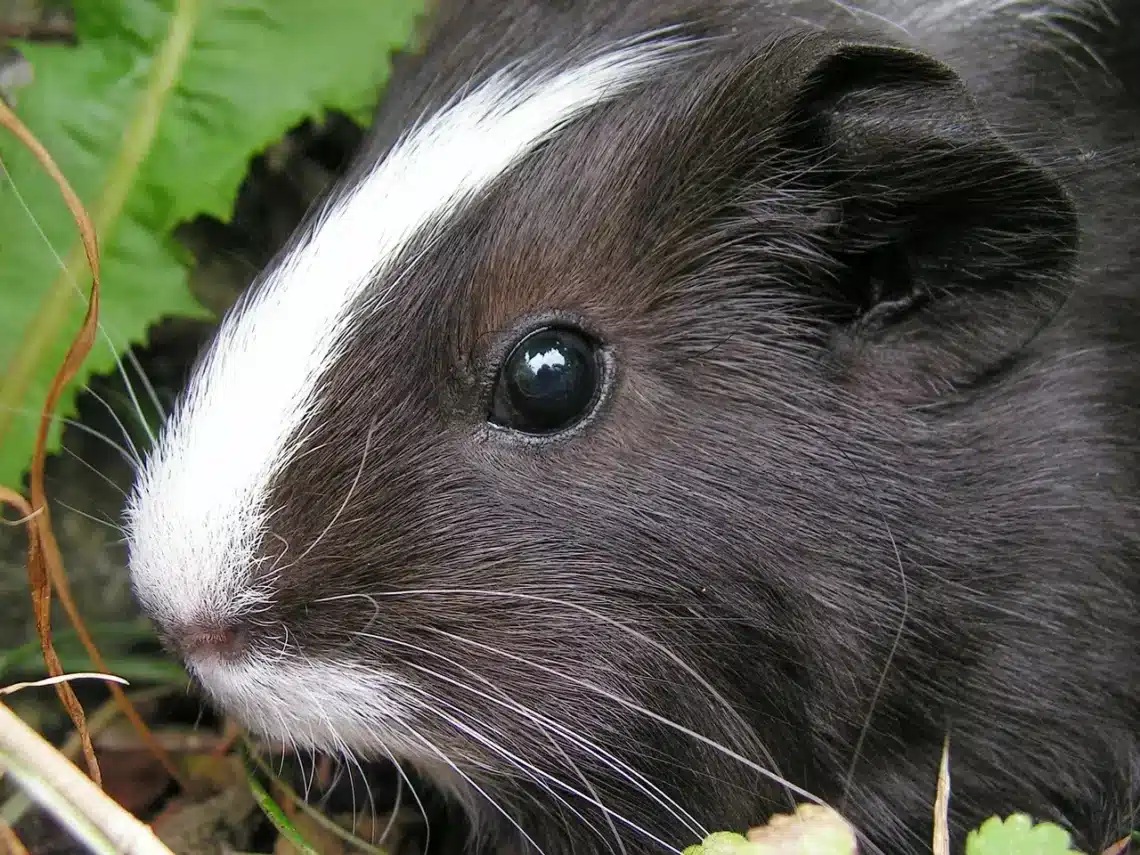
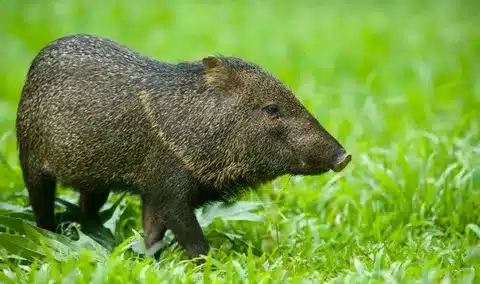
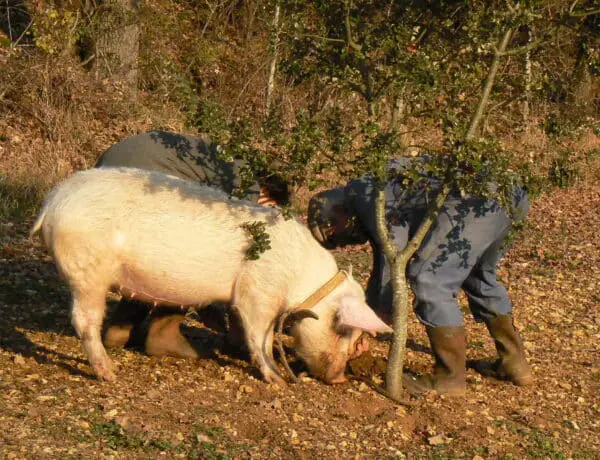
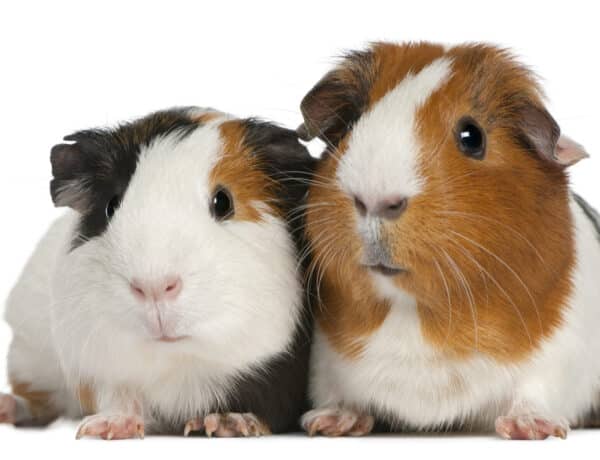
No Comments